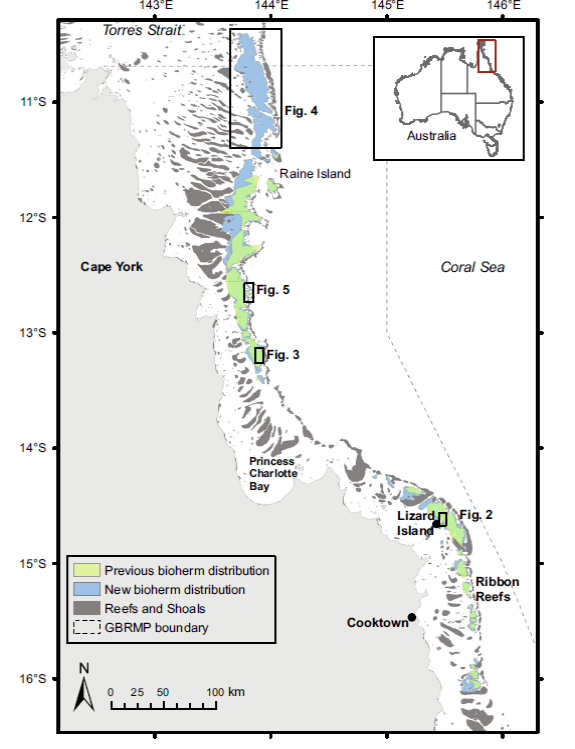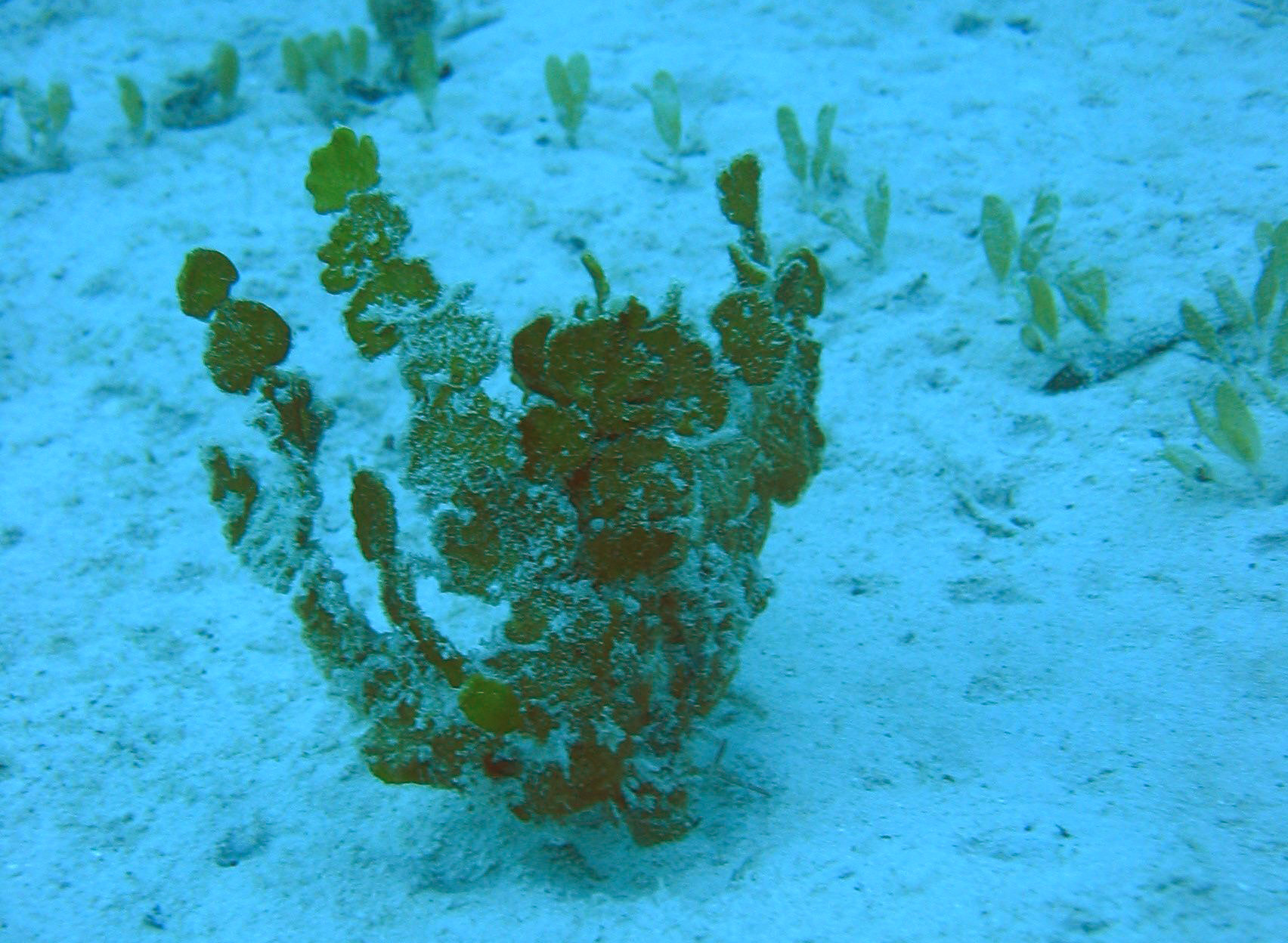|
|
Subtidal erect calcareous algaeShort descriptionSubtidal erect calcareous macroalgae. Disclaimer: Ecosystem type descriptions are based on biophysical attributes identified in Central Queensland through expert advice and supported by scientific literature. Not all ecosystem types are mapped based on current inventory, and many of the ecosystems described here may also occur in other parts of Queensland.
Classification categoriesSelect from the links below to view related ecosystem type categories Long descriptionSubtidal erect calcareous macroalgae (i.e. those with an erect growth form and containing calcified segments[2]), including the genera Halimeda, the green Udotea and the red Amphiroa. Erect calcareous algae occurs on coral reefs on the reef flat and in the lagoon, and in shallow and deep nearshore areas, on unconsolidated substrates. Macroalgae are marine plants that photosynthesise in all cells, and have a simple holdfast to anchor onto substrates such as rocks, shells or gravel. Halimeda spp. has developed special anchoring filaments (rhizoids), which bind sediment and sand into a lump that enables them to anchor onto unconsolidated substrates. Rather than having leaves like seagrasses, erect calcareous macroalgae have a blade-like growth form which is divided into segments. The calcified segments can form branching growths that form thickets which create benthic structure[1]. 
Special valuesThis algal type and type 58 (subtidal encrusting algae) contribute to calcium deposition on the sea floor. After death, eroded fragments add to the calcium content of unconsolidated sediments such as white sandy beaches and reef lagoons. The calcium carbonate is deposited as aragonite, calcite and high magnesium calcite in the algal tissues[1]. The Halimeda segments accumulate in bank-like, mound-like or reticular structures (up to 20 metres thick) over thousands of years[3]. Unique deep water banks of Halimeda spp. exist as very large, ancient structural ecosystems on the northern Great Barrier Reef, known as bioherms, where they are exposed to tidal currents and upwellings that transport nutrient-rich water over the continental shelf. These bioherms have ecosystem value in terms of biodiversity and nursery refugia and preserve high resolution records of palaeoclimate and palaeoceanography[3]. Diagnostic attributesInundation 'Subtidal' Structural macrobiota 'Algae – Erect calcareous' QualifiersThe Naturalness qualifier may be relevant as Halimeda beds are vulnerable to trawling and dredging. DistributionHalimeda bioherms occur globally from Indonesia, to the Timor Sea and the Caribbean. On the Great Barrier Reef they occur between depths of 25 and 50 metres, often occupying hundreds, even thousands of square kilometres (e.g. off Cape York and in the Ribbon Reefs region, Lizard Island region, Cooktown region, and the Swains). The following relates to distribution of this ecosystem type within the Central Queensland mapping area:
CommentsOther relevant attributes include Consolidation and Sediment texture. In Port Curtis, consolidated substrate, rubble and ‘live’ and dead rock formed attachment substrates for macro-algal ecosystems including both erect macrophytes and erect calcareous algae[2]. The massive Halimeda bioherms have distinct and complex Terrain morphology (mounds, reticulate shapes, ridges) which can be picked up on radar and Light Detection and Ranging (LiDAR), and are generally next to deep sea depressions[3]. Upwelling of cool, nutrient rich water from below the Coral Sea thermocline delivers nutrients to enable the bioherms to grow. Therefore, the relevant attributes are Energy source (Current – Upwelling) and Water temperature. Additional InformationA Massive Reef Was Just Discovered Hiding Behind The Great Barrier Reef - ScienceAlert Saltmarshes, seagrasses and algae - Queensland Department of Primary Industries Algae and algae blooms - Queensland Government Harmful algae - Queensland Government References
Last updated: 11 July 2019 This page should be cited as: Department of Environment, Science and Innovation, Queensland (2019) Subtidal erect calcareous algae, WetlandInfo website, accessed 8 May 2025. Available at: https://wetlandinfo.des.qld.gov.au/wetlands/ecology/aquatic-ecosystems-natural/estuarine-marine/descriptions/54/ |

 — Department of the Environment, Tourism, Science and Innovation
— Department of the Environment, Tourism, Science and Innovation


